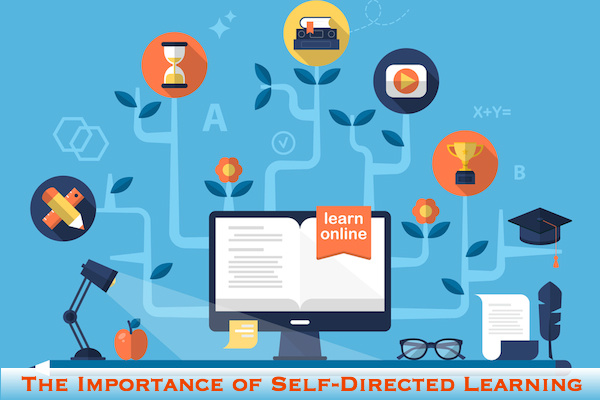The Importance of Self-Directed Learning
- 18 January, 2018 //
- For Parents, Teaching Resources //
- Tags : lessons, online learning, self-directed learning
- Comments Off on The Importance of Self-Directed Learning

When I was in high school, I was fascinated by astronomy. I didn’t know much about it, but was curious to learn more about our universe. My school offered a program that allowed self-directed learning, where students designed and followed their own curriculum under the guidance of an advisor. I spent my senior year taking traditional math and science classes, visiting observatories, researching, writing, studying star charts and the night skies, and attending lectures. The most memorable was one taught by the late Clyde Tombaugh, discoverer of Pluto. This all happened before online learning was available and the first exoplanet was discovered.
Adults are self-directed learners. When your boss asks you to take on a new project, you don’t toss up your arms and say, “I can’t do it.” Rather, you develop an action plan and get to work. If you encounter something of interest, you learn more by reading, watching videos, listening to podcasts, or interacting with others in person and virtually. You have learned how to learn.
Knowing how to learn is an essential skill in our lives as adults, so shouldn’t we empower our students and children to do the same? Given the right tools, guidance, and motivation, the potential for student success is limitless.
Encouraging Self-Directed Learning
Babies and toddlers are natural self-learners. They’re constantly putting together information to come up with their own conclusions about how the world works, but once children enter school they lose a bit of that self-motivation and instead focus on teachers and parents to show them the way. Self-directed learning places adults in the role of a manager or an impartial counselor rather than a teacher, asking questions and setting up activities to help children make discoveries on their own.
1. You can encourage children to participate in self-directed learning activities by:
2. Having students set learning goals at the beginning of the school year
3. Encouraging students to self-evaluate and monitor their academic performance
4. Setting up self-paced lessons for students to work through on their own
5. Assigning research projects where students choose the topic
6. Posing questions for students to answer
7. Presenting problems for students to solve
8. Letting students teach the class about something that interests them
Teaching students to ask “Why?” and to not accept “I don’t know” as an answer
For students to be truly successful with self-directed learning, you must provide them with tools to help keep them on track.
When students first start learning on their own, they’ll need a lot of support and encouragement. For students to be truly successful with self-directed learning, you must provide them with tools to help keep them on track. For example, they must have strong study skills and know how to set effective learning goals. As they develop these skills, you’ll be able to move further into the background and set them free to learn on their own.
Benefits of Self-Directed Learning
Whether you are looking to supplement your child’s education, find a new way to introduce or review content, or create a classroom culture of “can,” here are just a few of the benefits of self-directed learning.
Increase Ownership of Learning
With self-directed learning, students must be active participants in their education. At its best, this means students have the opportunity to wonder, ponder, and be creative. Students control the pace of their learning, allowing them to spend more time on what they need and want to learn. Students can focus on topics that fascinate them, then cast wide nets and explore topics they know little about.
Foster Metacognition
Becoming a successful learner involves understanding how you learn. This can be difficult for students of all ages as we must confront our weaknesses as well as our strengths. Part of the self-directed learning process should include setting goals and reflecting upon how well we achieved those goals. Through this process students come to understand the strategies that make them successful learners.
Develop Career Readiness Skills
Time management. The ability to work both autonomously and collaboratively. Problem solving. Strategic planning. Decision making. These are all skills required in the workplace and components of a well-planned, self-directed learning model. We ask our students to apply what they learn in the classroom to real-world situations. Self-directed learning can help students develop the real-world skills they will need once they leave the classroom.
Nurture an Appreciation for Learning
Ultimately, perhaps the greatest benefit of self-directed learning is gaining an appreciation for learning, turning students into lifelong learners. Some 1,800+ confirmed exoplanets since high school later and I am still learning about astronomy, albeit using more powerful technology. I didn’t go on to become an astronomer, but I still gaze at the night sky and marvel at the beauty of it.
Sites with FREE lessons: Help Teaching, Khan Academy, CK-12, PBS Learning Media, YouTube EDU, and TED-Ed.
Today’s students have access to a wealth of online resources for self-directed learning. Get started by checking out the Ultimate Guide to Free Online Self-Learning which includes great sites that feature free lessons developed for students.


